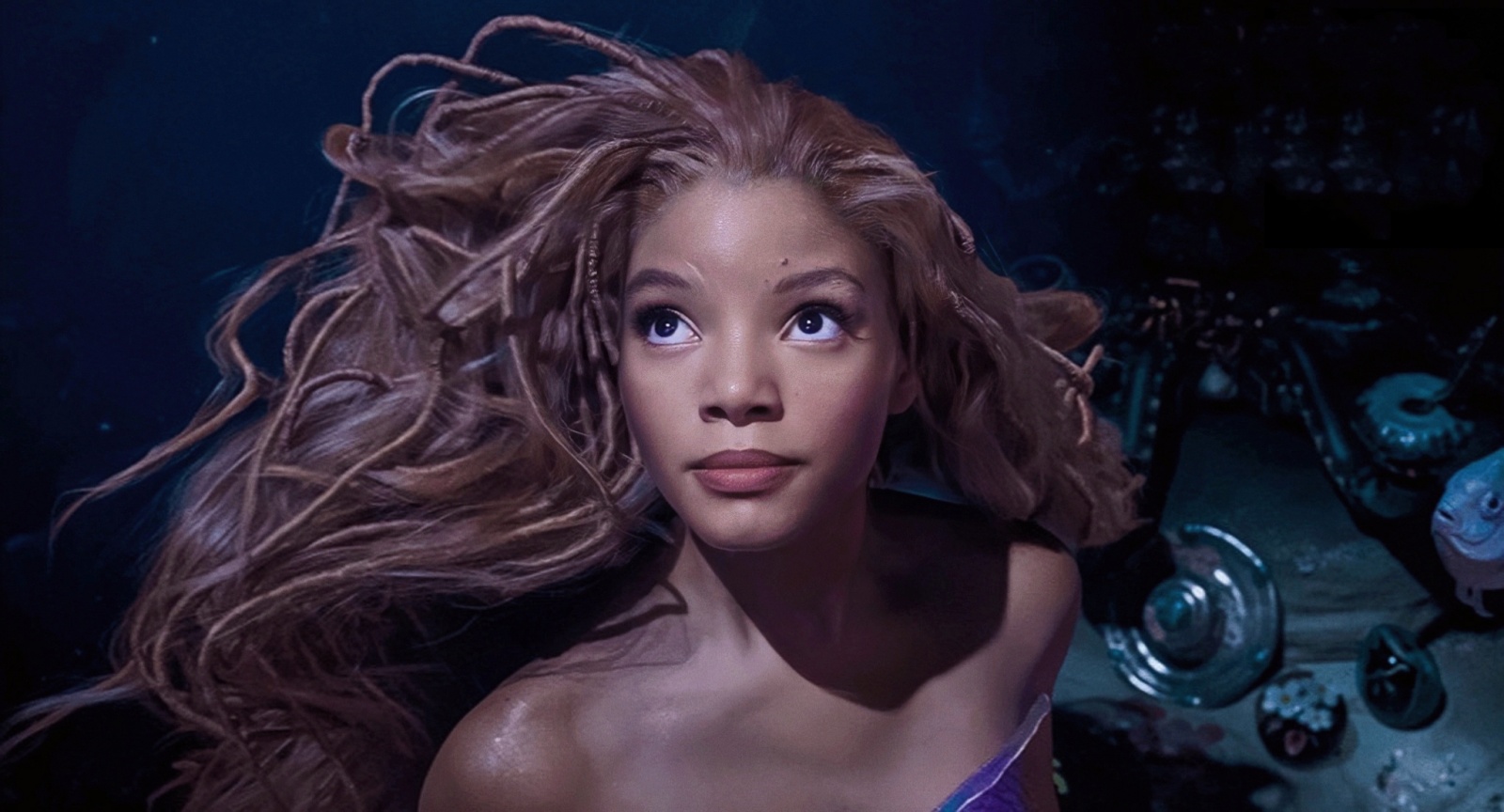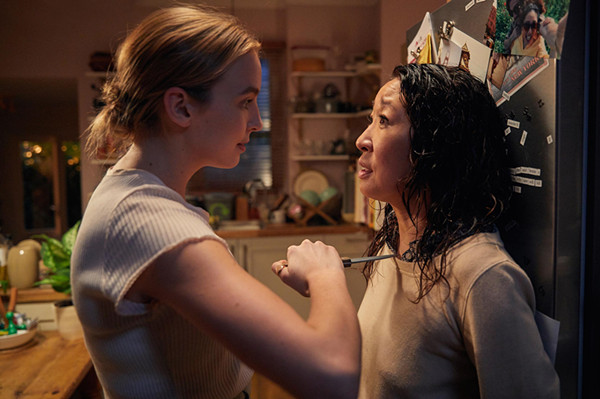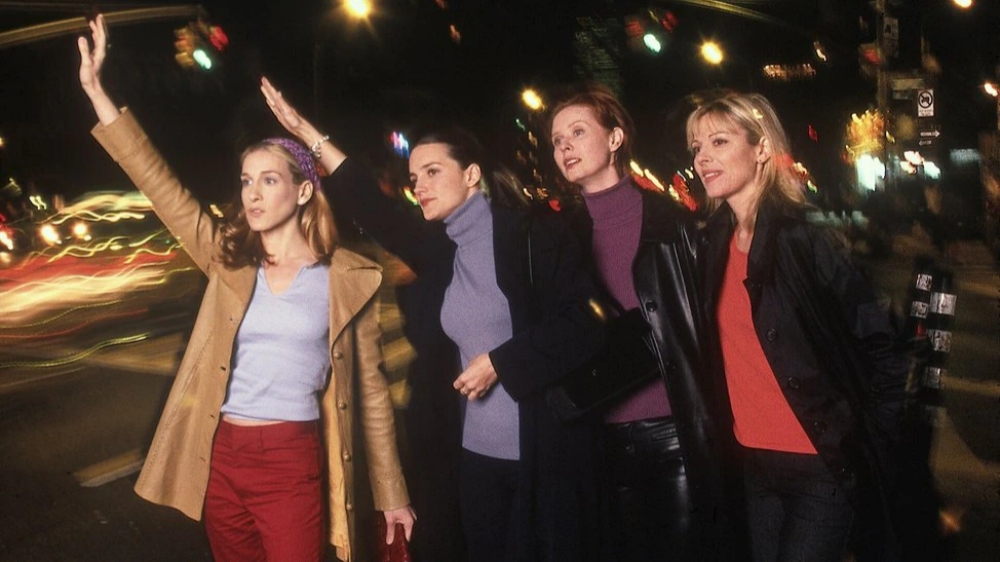
Having discussed the shift towards labeling and the portrayal of female characters in dramas, we must now address the "elephant in the room"—political correctness. Undoubtedly, the escalating trend of political correctness in Western society is the most significant change in content creation for film and television in Europe and America over the past eight years.
When Disney's updated versions of "The Little Mermaid" and "Snow White" sparked widespread ridicule online due to casting controversies, political correctness—a term that originated from the civil rights movement to describe a societal consensus on pursuing equality—had already become a kind of inherent original sin, and one that pleases neither side. Few factors can simultaneously cause such headaches for filmmakers and audiences as political correctness.

Still from "The Little Mermaid"
The Quantitative Changes Brought by Political Correctness
It is undeniable that political correctness has comprehensively influenced the production of various genres of film and television in Europe and America over the past eight years. When focusing specifically on its impact on female-centric narratives, two main aspects are evident: First, in productions aimed at a general audience (i.e., all genders), there has been an increasing presence of significant female characters and perspectives. In other words, the representation of women's voices has been elevated within the overall content. Second, in productions primarily targeting female audiences, there is a growing trend toward more nuanced categorization based on demographic characteristics such as race, age, and sexual orientation, rather than treating women as a monolithic group.
I believe these two changes are both positive.
Political Correctness Regarding Women as a Collective
The positivity of the former change is more readily understandable because it elevates the discourse and significance of “women” as a collective minority group within films and dramas—something that the vast majority of female viewers surely welcome.
1. A Greater Diversity of Female Roles
Compared to dramas from ten or twenty years ago, the constraints and stereotypes associated with female characters have noticeably diminished, at least in terms of character design. The most prominent change is the diversification of professions for female characters.
In dramas from around the turn of the millennium, women were typically depicted either as full-time homemakers focused on family or as lawyers, doctors, and writers categorized as “middle-class elites.” These roles shared a common characteristic: their lives were easy to envision—whether for the screenwriters or the viewers, imagining a woman in an apron cooking for her family or a city woman dressed impeccably strutting in high heels to her office was far easier than picturing a female truck driver gripping the wheel of an 18-ton rig, as the latter clearly does not conform to societal definitions of “female” roles.
This scenario is changing. Nowadays, roles in traditionally male-dominated fields—such as firefighters, special forces soldiers, hackers, police officers, scientists, professional chess players, and more—now feature dynamic female characters in European and American film and television.

Still from "The Queen's Gambit"
While the male-to-female ratio in these careers remains significantly imbalanced in reality, the existence of groundbreaking female portrayals—like Beth, the genius chess player from "The Queen's Gambit," Elizabeth, the female chemist from "Breaking Bad," Marjan and Hen from "9-1-1," and Mare from "Mare of Easttown"—underscores that women's career options are no longer restricted by traditional stereotypes.
These characters may be fictional, but they provide a real imagination for women regarding their potential life paths. Arranging diverse, hard-to-envision professions for female characters based on political correctness ensures that such possibilities exist.

Still from "The Marvelous Mrs. Maisel"
The "Marvelous Mrs. Maisel," which premiered in 2017 and has swept the Golden Globes, Emmys, and Screen Actors Guild Awards, serves as an example. In the show's setting of the 1950s, being a stand-up comedian was a profession off-limits to women. However, the protagonist, Miriam, through her extraordinary talent, courage, and resilience, with the help of her female manager Susie, finally breaks the gender barriers of the stand-up stage.
Now, as we have come to accept and even admire female stand-up comedians in real life, we should also reflect on Miriam's story—only with an imagination of possibilities can "potential" eventually transform into "reality."
2. The Gradual Elevation of Female Characters' Voices
Setting aside female-centric narratives that primarily focus on leading female characters, the changes in the positioning of female characters in traditional dramas targeting the general public may more clearly illustrate this trend.
The elevation of female characters’ voices involves two shifts in power: The first is whether female characters become authority figures in the story's setting or environment. The second concerns whether female characters exert actual influence over male characters in the narrative.
In earlier mainstream series, particularly those set in workplace environments, there were rarely any women in significant positions of authority. Even when they existed, they were often relegated to the background or inadequately exercised their supposed decision-making power, particularly when it came to influencing male protagonists.

Still from "The Capture"
This situation is beginning to change. For instance, the recently acclaimed suspense series "The Capture" features a powerful female chief, Diana, at MI5, who displays the complexity expected of someone climbing to the pinnacle of the intelligence hierarchy—instinctively understanding the business and power struggles, unhesitatingly manipulating and deceiving others while consistently keeping national security and the independence of the intelligence system at heart. The dynamic interplay between her and the protagonist Jackson is based on mutual insight between two equally capable intelligence agents, fraught with friction, threats, and compromises. Diana genuinely exercises her role as a head of MI5 rather than merely existing as a background character like M in the "007" series.
Another encouraging example is the long-running and beloved series "Criminal Minds," which finally placed Emily at the helm of the Behavioral Analysis Unit after a series of male leaders.
Political Correctness for Women as Individuals
As the collective voice of women has grown stronger in European and American dramas, we must also recognize the gradual differentiation of "female" identity in individual characters, which is also becoming a trend in political correctness.
Arguably one of the most outstanding female-oriented series of the past eight years, "Mrs. America," has long foretold this trend through its historically-based narrative.
"Mrs. America" focuses on the fierce clash between the "feminist wave" and the "anti-equal rights amendment movement" in the 1970s in America. No other film or television series has so diversely presented the multitude of identities encompassed by "feminism" and interrogated whose rights "women's rights" are actually fighting for.

Still from "Mrs. America"
As depicted in the series, each woman embodies more than one social identity. Beyond the generic identity of "female," they possess multiple "intersecting identities" arising from various objective factors such as race, sexual orientation, social class, and profession. When the Equal Rights Amendment sought to legally protect the rights of women as a whole, the term "equality" inadvertently differentiated the individual women with "intersectional identities."
In a pivotal moment, protagonist Schlafly opposes the Equal Rights Amendment by arguing for the protection of homemakers’ rights, while differing "intersectional identities" among the women leading the feminist movement at the time lead to heated conflicts—Black women feel race and gender should be equally recognized, while the LGBTQ+ community wants sexual orientation included in the feminist agenda... The "intersectional identities" of individual women, and the tensions between various "intersectional identities," gradually became visible, discussed, and reflected upon during the feminist wave, eventually coalescing into today’s consensus and political correctness.
Previously, white, heterosexual female protagonists dominated female-centric dramas, but in recent years, roles with diverse racial and sexual orientations have become the norm, with shows like "Insecure" featuring an entirely Black cast. Furthermore, characteristics such as age, social class, and educational background—dimensions of intersectionality that are less overt than race and sexual orientation—are increasingly being integrated into the narratives of female-centric dramas.

Still from "Insecure"
The political correctness that arises from the intersectionality of women's identities is not a passive standard to be mocked. On the contrary, when the expression of women’s intersectional identities is embedded in the production of film and television, it signifies the recognition that "women," like men, may possess multiple identities. Women should be allowed to be complex and diverse individuals rather than being confined solely to their biological labels.
Does the Quantitative Change from Political Correctness Really Lead to a Qualitative Transformation?
Since both aspects of political correctness arise from the pursuit of equal rights, one would expect them to play a positive role in altering societal perceptions. Yet why does political correctness in film and television often provoke controversy and mockery?
It is undeniable that political correctness in recent European and American productions often suffers from superficiality, as seen in a series of classic remakes from Disney. Not only children's fairy tale adaptations like "The Little Mermaid" and "Snow White," but even adaptations of monumental works in fantasy, such as "The Rings of Power," have simplified complex epic stories into mere manifestations of "political correctness."

"Snow White" teaser poster
As an audience, the source of my annoyance and the trigger for my endless critique is not political correctness itself, but rather the arrogance hidden behind so-called political correctness from the creators—who seem to believe that merely changing a character's skin color or inserting a few new characters representing minority identities suffices to fulfill the demands of political correctness!
In the sociological work "The Dark Side of Life," American scholar Michael Schwab posits: "Typically, the more powerful groups know little about the weaker groups because those in power lack sufficient motivation to do so."
It is this ignorance and arrogance that create stereotypes and labels about minority groups, and the purpose of political correctness is to correct the ignorance that powerful groups have towards weaker groups through artificial means. Therefore, authentic political correctness should be predicated on a genuine understanding of minority identities. In plain terms, it is essential to tell stories about minority characters from the perspective of minority groups, and similarly, to narrate women's stories from a female perspective, as opposed to arrogantly forcing minority identities into frameworks designed for traditional majority groups.
As political correctness has profoundly impacted all aspects of film and television production today, we may need to ask ourselves: Has the quantitative change brought about by political correctness genuinely resulted in a qualitative transformation?


